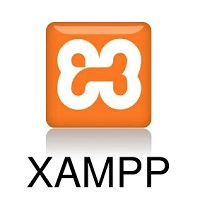
Xampp
XAMPP is a free and open-source cross-platform web server solution stack package developed by Apache Friends, consisting mainly of the Apache HTTP Server, MariaDB database, and interpreters for scripts written in the PHP and Perl programming languages. It is a simple, lightweight, and easy-to-install Apache distribution that makes it extremely easy for developers to create a local web server for testing and deployment purposes.

Xampp: The Ultimate Guide
Key Features
Integrated Components:
- Apache: The most widely used web server software, providing robust, secure, and extensible web server capabilities.
- MariaDB: A reliable and robust database management system forked from MySQL, known for its performance, stability, and compatibility with MySQL.
- PHP: A popular server-side scripting language designed for web development, embedded into HTML to manage dynamic content, databases, and session tracking.
- Perl: A high-level, general-purpose, interpreted, and dynamic programming language well-suited for web development and network programming.
Cross-Platform Compatibility:
- Windows, macOS, and Linux: XAMPP is available for multiple operating systems, ensuring a consistent development environment across different platforms.
Ease of Installation:
- One-Click Installer: A straightforward installation process that bundles all necessary components together, making it easy for developers to set up a local development environment quickly.
User-Friendly Control Panel:
- Centralized Management: The XAMPP Control Panel allows users to start and stop modules, configure settings, and access various tools and logs from a single interface.
Comprehensive Tools:
- phpMyAdmin: A web-based administration tool for managing MariaDB databases, enabling users to perform tasks such as creating and modifying databases, tables, fields, and rows.
- FileZilla FTP Server: An FTP server that provides secure and reliable file transfers.
- Tomcat: An open-source implementation of the Java Servlet, JavaServer Pages, Java Expression Language, and Java WebSocket technologies, allowing users to run Java-based web applications.
Installation and Setup
Download:
- Official Website: Download XAMPP from the official Apache Friends website (apachefriends.org). Ensure you select the correct version for your operating system.
Installation:
- Windows: Run the installer and follow the on-screen instructions to complete the installation. It is recommended to install XAMPP in a root directory (e.g.,
C:\xampp) to avoid permission issues. - macOS and Linux: Follow the specific installation instructions for your OS, typically involving running the installer from the terminal.
- Windows: Run the installer and follow the on-screen instructions to complete the installation. It is recommended to install XAMPP in a root directory (e.g.,
Initial Configuration:
- XAMPP Control Panel: Launch the XAMPP Control Panel to manage your server components. Start the Apache and MySQL modules to begin using XAMPP.
- Security Settings: Configure security settings for your XAMPP installation by running the security script provided in the XAMPP directory.
Using XAMPP
Creating a Local Web Server:
- Document Root: Place your web files in the
htdocsdirectory (e.g.,C:\xampp\htdocson Windows) to serve them locally. - Accessing Your Site: Open a web browser and navigate to
http://localhostto view your local web server’s homepage.
- Document Root: Place your web files in the
Managing Databases with phpMyAdmin:
- Access phpMyAdmin: Navigate to
http://localhost/phpmyadminto open the phpMyAdmin interface. - Creating Databases: Use phpMyAdmin to create new databases, manage tables, and execute SQL queries.
- Access phpMyAdmin: Navigate to
Configuring Apache and PHP:
- Configuration Files: Modify Apache (
httpd.conf) and PHP (php.ini) configuration files located in thexamppdirectory to customize settings such as port numbers, document root, and memory limits. - Enabling Modules: Enable or disable Apache and PHP modules by editing the configuration files or using the XAMPP Control Panel.
- Configuration Files: Modify Apache (
Advanced Features
- Virtual Hosts:
- Multiple Sites: Set up virtual hosts to host multiple websites on the same XAMPP installation. Edit the
httpd-vhosts.conffile in the Apache configuration directory and add entries for each site. - Hosts File: Update the
hostsfile on your system to map custom domain names tolocalhost.
- Multiple Sites: Set up virtual hosts to host multiple websites on the same XAMPP installation. Edit the
- SSL Configuration:
- Enabling SSL: Configure SSL for your local sites by generating SSL certificates and modifying the Apache configuration to use
https. - Testing Secure Sites: Access your local sites securely using
https://localhostor your custom domain names.
- Enabling SSL: Configure SSL for your local sites by generating SSL certificates and modifying the Apache configuration to use
- Using XAMPP with IDEs:
- Integrated Development Environment (IDE): Configure your preferred IDE (e.g., Visual Studio Code, PHPStorm, NetBeans) to work seamlessly with XAMPP for an integrated development experience.
- Debugging: Set up debugging tools such as Xdebug to troubleshoot and debug your PHP applications within your IDE.
Troubleshooting Common Issues
- Port Conflicts:
- Apache Not Starting: If Apache fails to start, it may be due to a port conflict (e.g., another application using port 80). Modify the
httpd.conffile to change the port number Apache listens on. - MySQL Port Issues: Similarly, if MySQL fails to start, check for port conflicts and modify the
my.inifile to change the port number MySQL uses.
- Apache Not Starting: If Apache fails to start, it may be due to a port conflict (e.g., another application using port 80). Modify the
- Permission Issues:
- File Permissions: Ensure that the
htdocsdirectory and other relevant directories have the correct permissions to allow read/write access. - Running as Administrator: On Windows, run the XAMPP Control Panel as an administrator to avoid permission issues.
- File Permissions: Ensure that the
- Database Connection Errors:
- Connection Settings: Verify the database connection settings in your application’s configuration files. Ensure that the database host, username, password, and database name are correct.
- Starting MySQL: Ensure that the MySQL module is running in the XAMPP Control Panel.
